Three Types of Fingerprints
The three types of fingersprints are arch, loop and whorl. Within each type of fingerprint there are different types of arches, loops, whorls.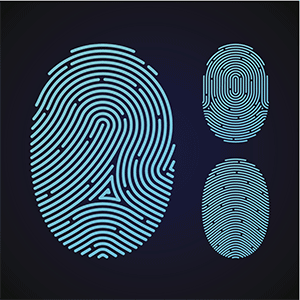
The type of fingerprint on the left is a loop. The top right fingerprint is a whorl. The bottom right fingerprint is a arch.
Arches
Arches can be subdivided into two categories: tented arch and plain arch For a fingerprint to be considered an arch, the pattern must have ridges entering one side and exiting the other side. Also, no deltas are present. A delta creates a triangle-like area usually where three ridge lines diverge from one point.
Tented arches are more pointed compared to a plain arch.

This shows a tented arch on the laft and a plain arch on the right.
Loops
There are two different types of loops: radial loop and ulnar loop Loops are named after the lower arm bone that they open towards. The ulna bone is on the pinky side of the lower arm, and the radius bone is on the thumb side. An ulnar loop enters and exits near the pinky (or the ulna) where the radial loop enters and exits toward the thumb (or the radius). Loops have one delta present. These two types can be very confusing to students, and it helps to know which hand the fingerprint came from.
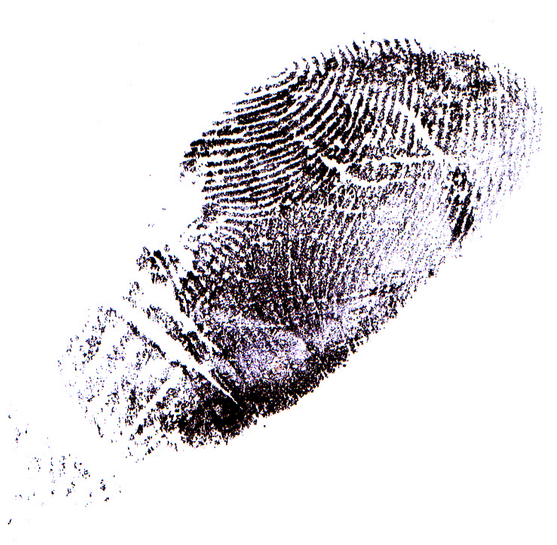
Thumb- no major loop
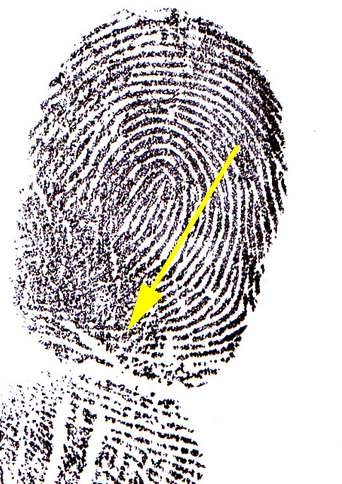
Index Finger- towards the pinky

Middle Finger- towards the pinky
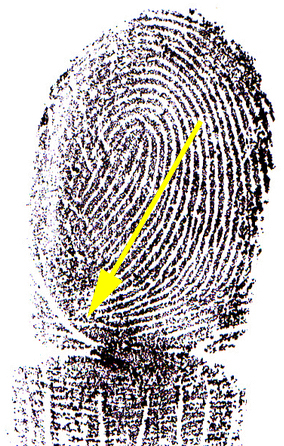
Ring Finger- towards the pinky
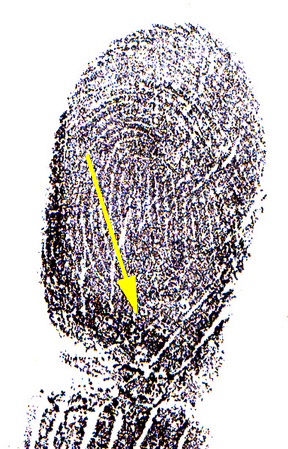
Pinky- towards the thumb
Whorls
There are three different types of whorls: plain whorl central pocket whorl double loop whorl and accidental whorl Each of these is different in its own way, but each type has two deltas.
A central pocket whorl is a much tighter whorl compared to the plain whorl.
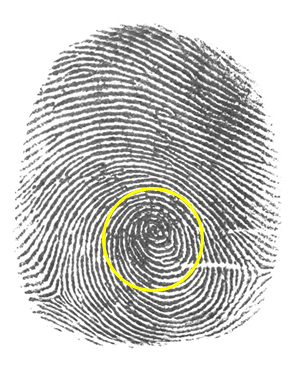
Plain Whorl
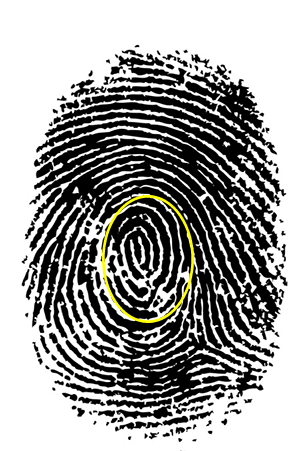
Central Pocket Whorl
A double loop whorl has two loops within it. An accidental whorl includes any whorl that doesn't fit into the other three types of whorls.

Double Loop Whorl
Fingertip Minutiae
The fingerprint minutiae (AKA ridge characteristics) can be linked to one specific person. This makes it individual evidence. No two people will have the exact same minutiae characteristics, not even identical twins.
Read more about minutiae at
There are several types of minutiae found in each print. This is what makes them unique. Learn more about ridge characteristics in the following slides.
Ridge Dot
Fingerprint that contains a dot with two ridge lines.
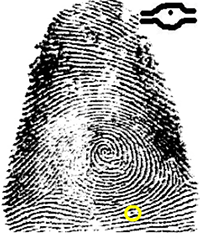
Bifurcation
One friction ridge branches off and divides into two friction ridges.
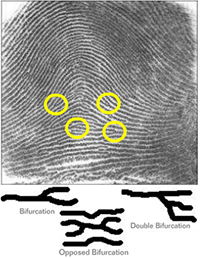
Trifurcation
This looks like a pitch-fork and branches off into 3 ridge lines.
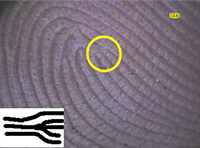
Ending Ridge
Where the ridge of the fingerprint stops.
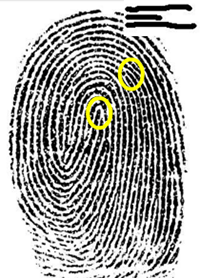
Ridge Crossing
Where two ridges of the fingerprint cross, forming an X patern.
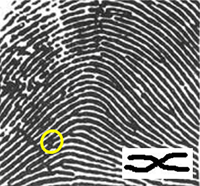
Encloser (lake)
When a ridge breaks in two and then joins back into one a short time later. This looks like an oval or an eye.

Short Ridge (island)
A short ridge in a finger print looks like an island.
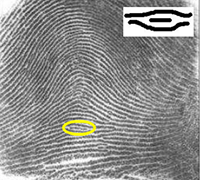
Spur (hook)
This part of a fingerprint looks like a hook coming off of another ridge.
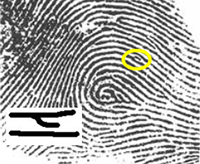
Bridge
When a ridge connects two ridges, like a bridge.

Delta
A triangle-like area asually where three ridge lines diverge from one point.

Minutiae
Look at the picture below and identify the different minutiae. The number of minutiae that are required to match between two prints varies. Criminal courts require 8 to 12 minutiae to match.
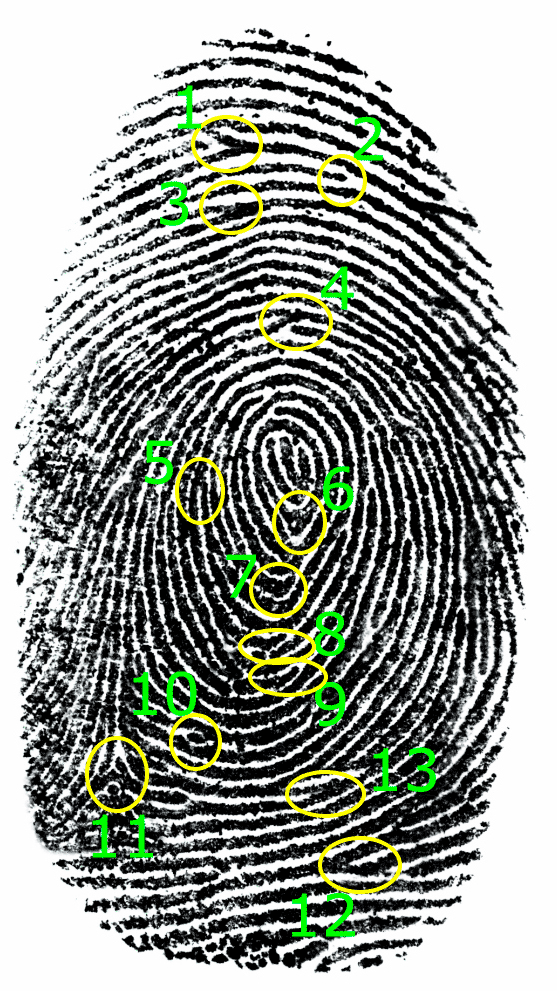
- Bridge
- Ridge Ending
- Bifurcation
- Bifurcation
- Bifurcation
- Enclosure
- Ridge Crossing
- Ridge Ending
- Island
- Ridge Dot
- Delta
- Double Bifurcation
- Double Bifurcation

